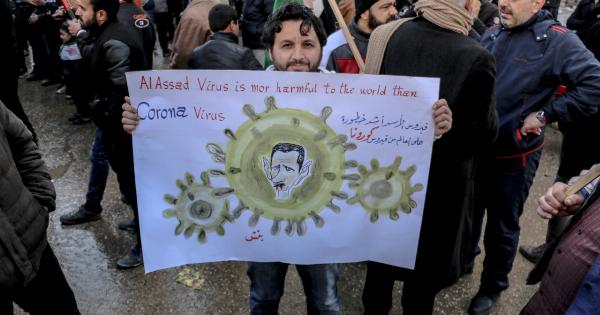Cancer is one of the most feared diseases in the world because it affects millions of people every year and can often be life-threatening.
Thus, when a promising cancer treatment disappears from the market, it raises eyebrows and creates fear among patients.
Vanishing cancer treatments are not new phenomena; they have been happening for decades now. While some treatments fail to get approval by the FDA, others disappear from the market without a trace.
The reasons behind the vanishing of cancer treatments are often mysterious, but several factors can explain why it occurs.
1. Insufficient Efficacy and Safety Testing
New cancer treatments usually go through three stages of clinical trials before they get approval from the FDA. However, some treatments that show early promise or seem to have a sound mechanism of action may get accelerated approval from the FDA.
This means that they can bypass the usual clinical trial requirements and are approved based on limited evidence.
The problem with such approvals is that the efficacy and safety of the treatment may not have been fully tested.
This can lead to the discovery of harmful side effects or to lower efficacy in the long run, leading to the withdrawal of the drug from the market.
2. Lack of Funding
Cancer drug development is a long and expensive process that requires vast amounts of funding. Clinical trials alone can cost millions of dollars, and many promising treatments can fail in early testing stages.
Thus, many biotech and pharmaceutical companies are hesitant to invest in cancer drug development, leading to a shortage of funding.
Without the proper amount of funding, cancer treatments may stay in early development stages or may not be fully developed, leading to a lack of efficacy or safety.
The lack of funding may also lead to companies pulling a drug off the market if it fails to generate enough revenue to sustain its development or to compete with other drugs.
3. Legal Issues
Several legal issues may cause a cancer treatment to vanish from the market. One major issue is patent conflicts.
If a drug violates another drug’s patent, the owners of the patent may sue, leading to a court-ordered injunction prohibiting the sale of the drug.
Another legal issue is regulatory compliance. If a drug fails to meet the regulatory standards for efficacy, safety, or labeling, the regulatory bodies may withdraw it from the market.
A drug that fails to comply with the FDA’s standards may be issued a warning letter or may face lawsuits for false advertising, leading to the withdrawal of the drug from the market.
4. Expiration of Patents
Drug companies invest a lot of money and time in research and development of cancer drugs. Once a drug gets market approval, it is protected by patents for a certain number of years, during which the company can sell it exclusively.
When the patents expire, other companies can produce a generic version of the drug, which may be sold at a lower price. The availability of cheaper, bioequivalent generics means a reduced market for the original drug, leading to a decrease in sales, and eventually, the withdrawal of the drug from the market.
5. Change in Cancer Treatment Landscape
The cancer treatment landscape is continually evolving, with new treatments and technologies replacing old ones.
For instance, surgery and radiation were previously the only cancer treatments available, but now there are numerous cancer treatments, including chemotherapy, immunotherapy, targeted therapy, and others. These treatments have led to a change in the way cancer is treated, leading to a decline in the use of older treatments, which may be withdrawn from the market.
6. Negative Publicity
Drug companies may pull a cancer drug off the market if it receives negative publicity due to harmful side effects or unproven claims.
The backlash may lead to a decrease in sales, which may not justify the cost of continued production, leading to the withdrawal of the drug from the market.
7. Lack of Market Demand
Cancer treatments need a sizable patient population to generate enough revenue to sustain their development.
If there is a lack of market demand for a drug, it may not be financially viable for manufacturers to continue producing it, leading to the withdrawal of the drug from the market.
8. Insufficient Data
Cancer treatments require a vast amount of data to prove their efficacy and safety. If there is insufficient data to support a drug’s claims, regulatory bodies may withdraw it from the market.
9. Disputes among Scientists and Clinicians
Sometimes, disputes among scientists and clinicians can lead to the withdrawal of a cancer treatment from the market.
If there is disagreement among medical professionals over the efficacy or safety of a drug, it may lead to negative publicity, which may cause the drug to be withdrawn.
10. Natural Contingencies
Several natural contingencies such as the COVID-19 pandemic can also lead to the disappearance of cancer treatments. The pandemic has impacted the development and approval of many drugs, leading to clinical trials being halted.
Conclusion
The vanishing of cancer treatments can create fear and confusion among patients, especially when the drugs show early promise.
However, it is essential to understand why treatments disappear from the market to ensure that the development of cancer drugs is not hindered.
Vanishing cancer treatments can occur due to various reasons, including insufficient efficacy and safety testing, lack of funding, legal issues, expiration of patents, change in treatment landscape, negative publicity, lack of market demand, insufficient data, conflicts among scientists and clinicians, and natural contingencies such as pandemics.

























